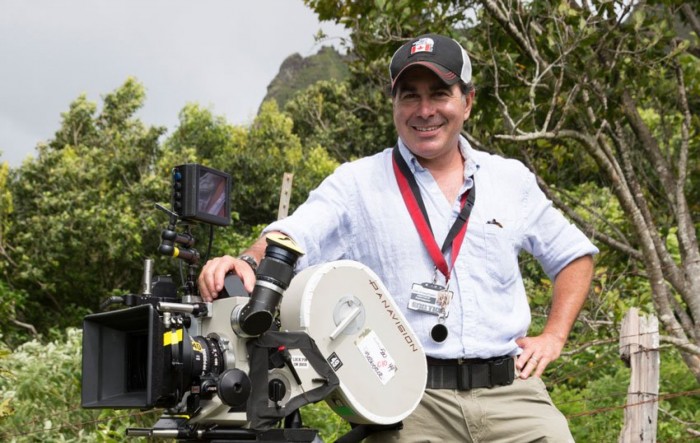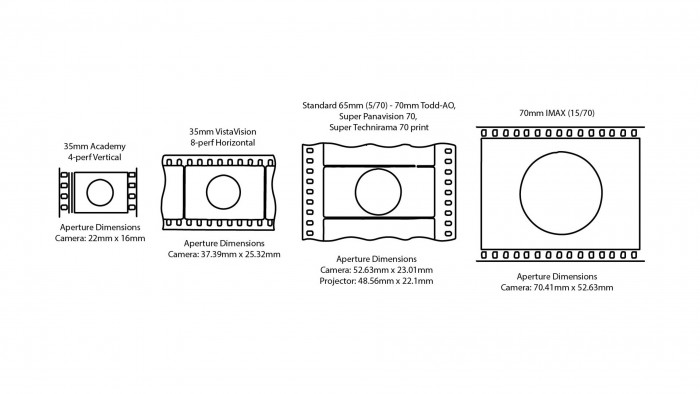'Star Wars: Episode 9' Will Be Shot On 65mm Film
Collin Trevorrow's Star Wars: Episode 9 will be shot with 65mm film cameras, a move away from the 35mm film format that JJ Abrams and Rian Johnson used on the previous two installments. The result will probably be a higher resolution image that shows more detail, making it more suitable for projection on larger screens like IMAX (which has its own format).
The news comes via Kodak, who has announced that in their film processing facility in the U.K. has just added the capabilities to handle 65mm, revealing that one of the projects listed to use Kodak 65mm stock is Star Wars: Episode IX. This is very exciting news indeed.
Rogue One: A Star Wars Story was shot on the digital 6K resolution large-format Arri Alexa 65 using the Ultra Panavision 70 lenses, which boasts 6K resolution. Rian Johnson's choice to shoot Star Wars: Episode 8 on 35mm film was for "logistical reasons." From what I understand, he wanted to shoot the movie in 65mm, but there was no film processing facility in the UK capable of handling the footage. He would have had to ship the footage to a facility in the US, delaying dailies for upwards of a business week, which puts a filmmaker at a disadvantage. With 35mm film, he can watch the dailies for the previous days shoot the next morning and decide if he missed anything or needed additional coverage.
John Schwartzman Returns As Cinematographer
We know that director Colin Trevorrow will be reteaming with Jurassic World/Amazing Spiderman cinematographer John Schwartzman on the upcoming edition of the Star Wars Skywalker saga. The press release however mistakenly lists J.J. Abrams as the director of the film, which would be huge news if it were actually true. The duo used 65mm to shoot some parts of Jurassic World, but it sounds like Episode 9 will use 65mm as its main capture format.
What Is 65mm? How Is It Different From 35mm?
For those of you wondering what the difference between 35mm film and 65mm film, here is a quick primer: 35 mm film is the film gauge most commonly used outside of digital. The name of the gauge refers to the width of the photographic film, which consists of strips 35 millimeters (or about 1 3/8 inches) in diameter. 65mm film is a wide high-resolution film gauge. The film is 65 mm (or about 2.6 inches) wide.
IMAX cameras use a specific type of 70mm film, which is essentially the same as 65mm but shot horizontally offering a larger aspect ratio. With Episode IX being shot on 65mm film, we can expect to see a much better resolution in large screen formats like IMAX. Disney has a deal with IMAX, which makes me wonder if Trevorrow will be framing in 65mm film to offer a larger aspect ratio for IMAX theaters. That much probably won't be confirmed until much later.
The press release also reveals that Kenneth Branagh's Murder On The Orient Express and Lasse Halstrom's Disney film The Nutcracker And The Four Realms will also be shot on 65mm. It seems like large format film is in a revival, with Christopher Nolan pushing this agenda for many years now. His new film Dunkirk was shot on 65mm film. In the past few years, auteurs such as Paul Thomas Anderson (The Master) and Quentin Tarantino (The Hateful Eight) have employed large format film and used it as part of the promotion for their movies.
Kodak Consumer and Film Division Chief Marketing Officer and President Steven Overman says "The film comeback is accelerating, and the epic, big-screen experience is well and truly back. The creative and aesthetic distinctiveness of 65mm film is still well beyond the capability of digital capture, so when discerning filmmakers want to a create work of memorable grandeur and lasting visual quality, they know that only real film delivers."

